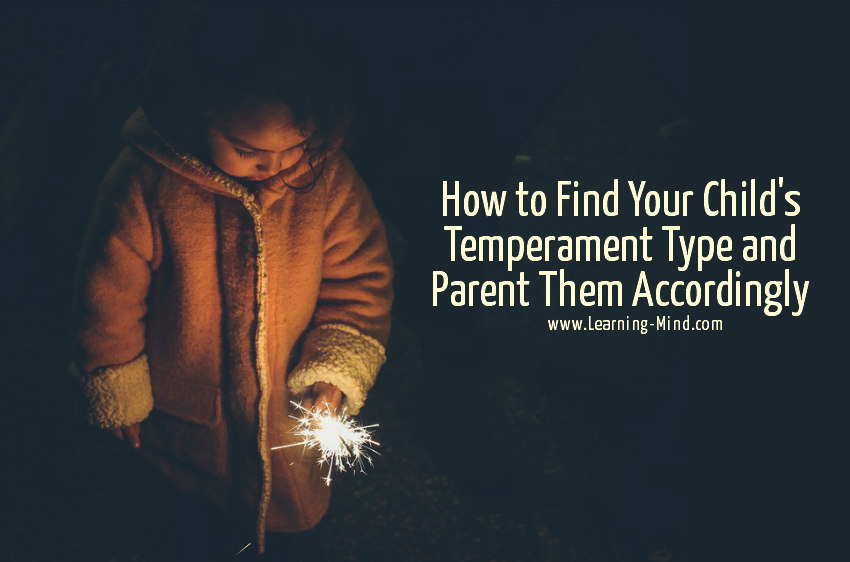
The temperament is a set of characteristics and qualities a person exhibits on a daily basis, starting with early childhood. How to find your child’s temperament type and how will it help you parent them?
These characteristics combined in temperament include emotional responses, behavior, peer dynamics, and interpersonal relationships.
Our temperament is one of the most basic parts of our personality. By the time a child reaches school age, their temperament is well-established. Parents are able to describe their child’s behviors and emotional responses very well and know how to deal with them in most cases. However, if there is an excess of one quality of your child’s temperament, it can be difficult to manage and respond to their sensitive needs.
Children with choleric temperament tend to be enthusiastic, lively and emotional. These children make quick decisions and shift from one idea to the next easily. At times, this child is impatient, they are easily irritable, and may provoke conflicts with peers as they get older.
Parents will experience more mood swings and breakdowns with their child’s temperament. Since this type of temperament is known for being hasty and impatient, they are prone to getting into risky situations.
On the other hand, choleric temperaments enjoy deep, analytical discussions rather than shallow, small talk. Parents will find it easy to have this child concentrate on interesting topics or activities. As a parent, try exploring different activities you think your child will enjoy. Painting with different mediums, karate, gymnastics, and documentaries are a few areas to explore with your child.
Additionally, learning how to control emotions and reactions will be a challenge for this child. Often times, choleric children will try to control their emotions too much and eventually blow up in a rage. Creating a space where your child can learn methods to express their emotions in a healthy manner helps to prevent outbursts that arise from their type of temperament.
Children with sanguine temperament tend to be cheerful and affectionate. These children are normally in a good mood. As a natural optimist, they are more likely to be carefree and love adventure. Curiosity rules this temperament and they desire motivation. Sanguine children are goal-driven individuals and work around their failures to learn and grow. Their mood can be unstable at times.
On the other hand, sanguine children will stop doing activities that don’t pique their interest. Similar to the choleric temperament, they will make more hasty decisions, overestimate his or her own abilities, and it is often based on their mood.
As a result, they indulge in high-risk behaviors and seen as impulsive. Jumping from rocks, riding skateboards, indulging in cravings, running as fast as possible are some of the characteristics of this child’s temperament.
As a parent, implementing problem-solving skills in your child will help them make more sound decisions rather than impulsive choices. It teaches them to take a moment to analyze a situation before making a final decision. Problem-solving skills are developed over time and will be used as they mature.
Children with phlegmatic temperament are calm, introverted, patient, and careful individuals. Parents will see their child able to control emotions and feelings well at an early age. There are fewer outbursts and tantrums from phlegmatic children.
This type of temperament makes a child imaginative and abstract. Phlegmatic children are good at creative play, storytelling, and artistic expression. They will be quieter and will not like things to be messy or disorganized.
However, these children are affected by disapproval and avoid conflict. Getting in trouble is something they avoid. It may be difficult for them to make new friends as their expressions are smaller and more controlled compared to outgoing peers. At the same time, once they get closer to someone, they build attachments and relationships with their friend easily.
Phlegmatic children prefer routines as they don’t like things to become chaotic. Routines also help them to stay focused. Also, encourage your child as they may take the time to make the final decision. Nagging and threatening can be seen as disapproval, which is something they dislike.
The melancholic type of temperament means this child is sensitive, in tune with other’s feelings, and has a wide range of emotions. They are described as “carrying the weight of the world on their shoulders”.
Melancholic children are aware of their own emotions, as well as those of others. They have high standards set for themselves, family and friends, and pay close attention to details. They are at peace in familiar spaces and like being around people they know, as they are community-oriented.
Melancholic children hide their emotions. Failure is difficult to overcome for a child with this temperament. Finding ways to improve self-esteem is important for a melancholic child’s personal development. Optimism and encouragement are necessary to boost this child’s mood.
In addition, allow your melancholic child to focus on his- or herself. Allotting time for self-reflection is important for this temperament and helps them to explore emotions and feelings. However, this temperament is stubborn and critical. Many parents have found that exercise and physical activity help this child escape their regular emotional awareness and over-analyzation.
Parents should remain sympathetic, positive and caring to assure their child feels supported and loved.
References: